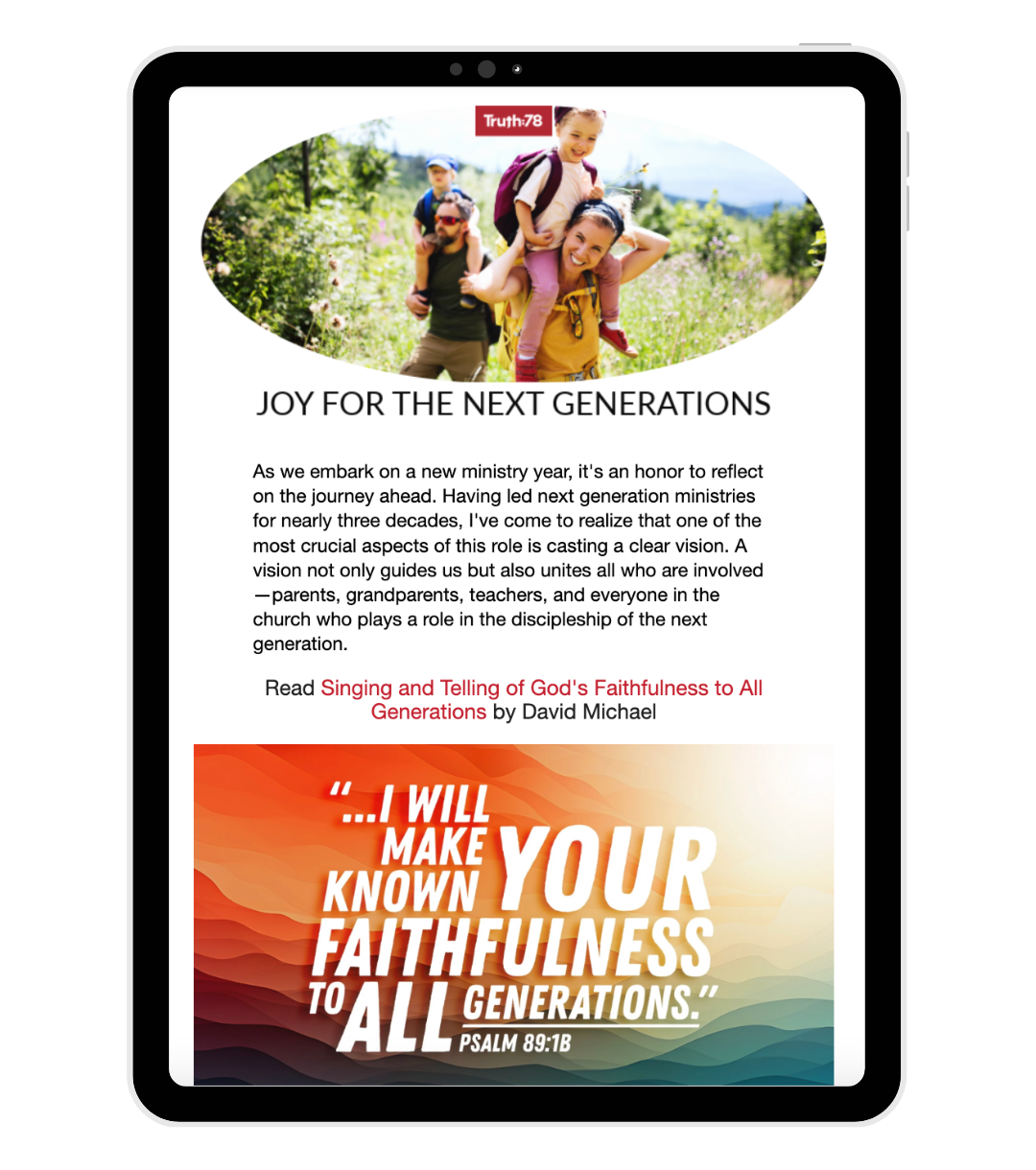Although not usually an ideal situation, many church classrooms consist of children of multiple ages. I currently teach a group of 70-plus students who range in age from kindergarten through sixth grade. To say this is challenging is an understatement, but it is doable and, with some careful foresight and preparation, it can be a wonderful experience for both the teacher and students.
Here are a few tips I have learned along the way:
- Spend extra time reading through and preparing your lesson. I usually make a first run through my lesson a couple of weeks ahead of time.
- Look for specific opportunities to involve different ages throughout the lesson. For example, have younger children/pre-readers help with an illustration or hold a visual. Have older children read verses or participate in more difficult illustrations from the lesson.
- Be ready to define terms in more than one way—both simple and more complex.
- At times, address different ages, and ask specific questions: “Fifth and sixth-graders, what problem is Jesus pointing out in these verses?”
- If necessary, tweak lesson illustrations to make them more applicable to differing ages. An illustration presented in a first-grade curriculum may seem babyish to a sixth-grader. Provide an additional example that makes the same point but applies to older children.
- Write out key words on a whiteboard or posterboard. Use different colored markers—it’s amazing how much adding a few colorful visual elements can help younger children.
- Use a visually appealing box or gift bag to store visuals that will be used during the lesson.
- Introduce Bible stories/verses using visual clues. Example: Before asking the children to recall Moses’ disobedience in hitting the rock in order to get water for the Israelites, I first chose three six-year-olds to come and open gift bags with clues inside: a rock, a stick, and a bottle of water. This simple addition helped to focus both the younger and older students.
- Consider using some interactive ways to highlight a key verse from the lesson. I use something I call “Build a Verse.” Write out a verse on a large piece of posterboard. Cut the verse into individual word sections (six to 10 sections, depending on the size of your class). Hand out the sections to the younger children and have them stand in random order in the front of the classroom. Give the older children the verse reference and have them, as quickly as possible, look up the verse in their Bibles. Have them give the younger children verbal commands in order to put the verse sections in the correct order (the children move from place to place). The kids love doing this!
I am now in my third year of teaching Truth78 curricula in a multi-age class. While it’s been challenging at times, I have grown to absolutely love it, and I believe that there are also definite benefits for the students as they interact with a wider range of ages.
RELATED RESOURCES
Upper- and Lower-Elementary Workbooks Engage Students at Their Level
Multi-level workbooks for How Majestic Is Your Name and Faithful to All His Promises make it possible to provide age-appropriate engagement for students from 1st to 6th grade.
1st-4th grade student workbook: Activities include cutting and pasting, tracing letters, filling in blanks, coloring, matching, mazes, secret codes, simple crosswords, drawing, dot-to-dots, and more. ORDER
4th-6th grade student workbook: By completing the notes and activities, students will remember the lesson and be able to apply what they have learned about God’s names and His character. ORDER
1st-4th grade student workbook: Each lesson in the Student Workbook includes the main ideas and Scripture taught in the lesson for review, a memory verse for children to learn, and an activity to help children remember the lesson. ORDER
4th-6th grade student workbook: By completing the notes and activities, students will remember the lesson and be able to apply what they have learned about God and His promises. ORDER







